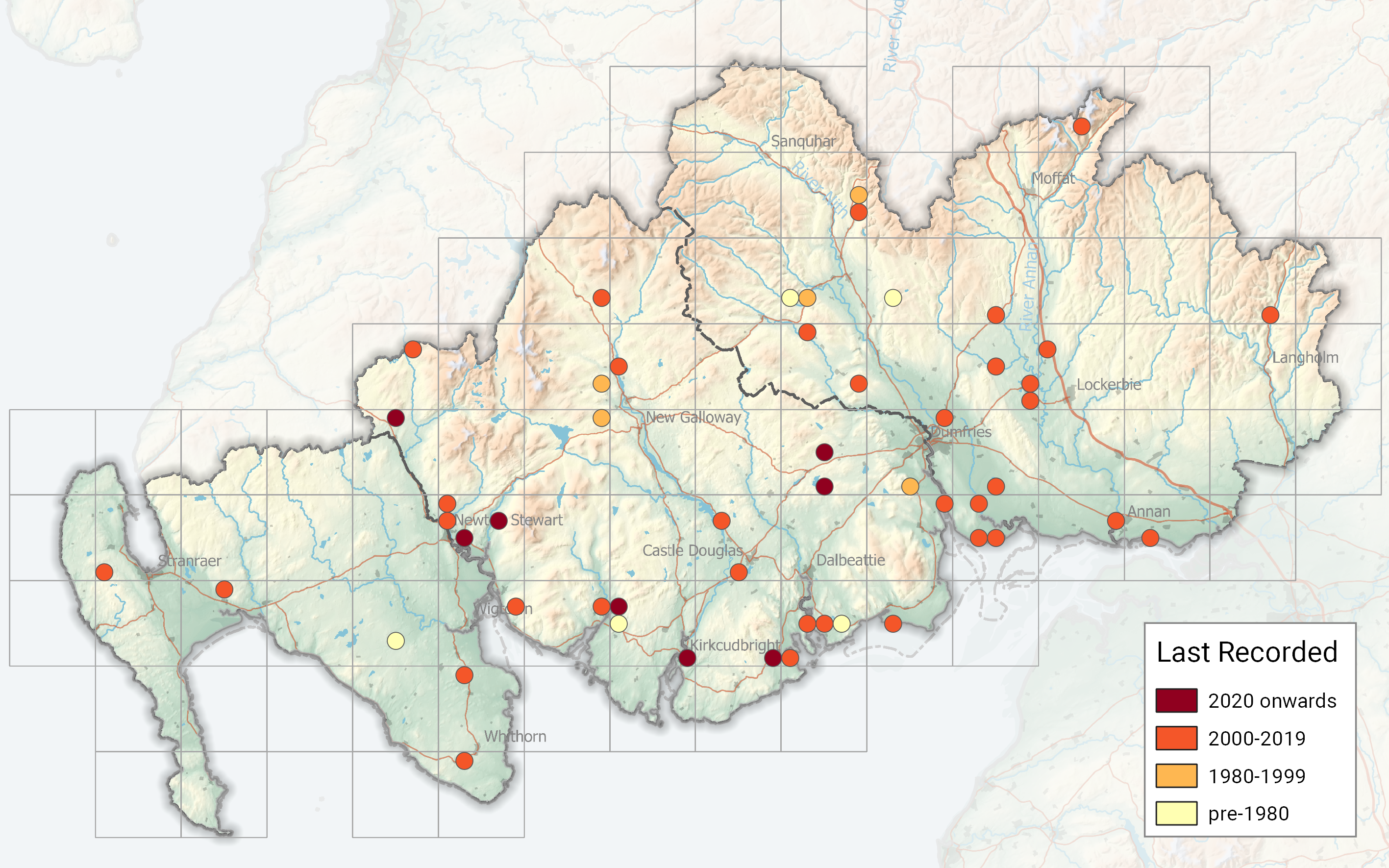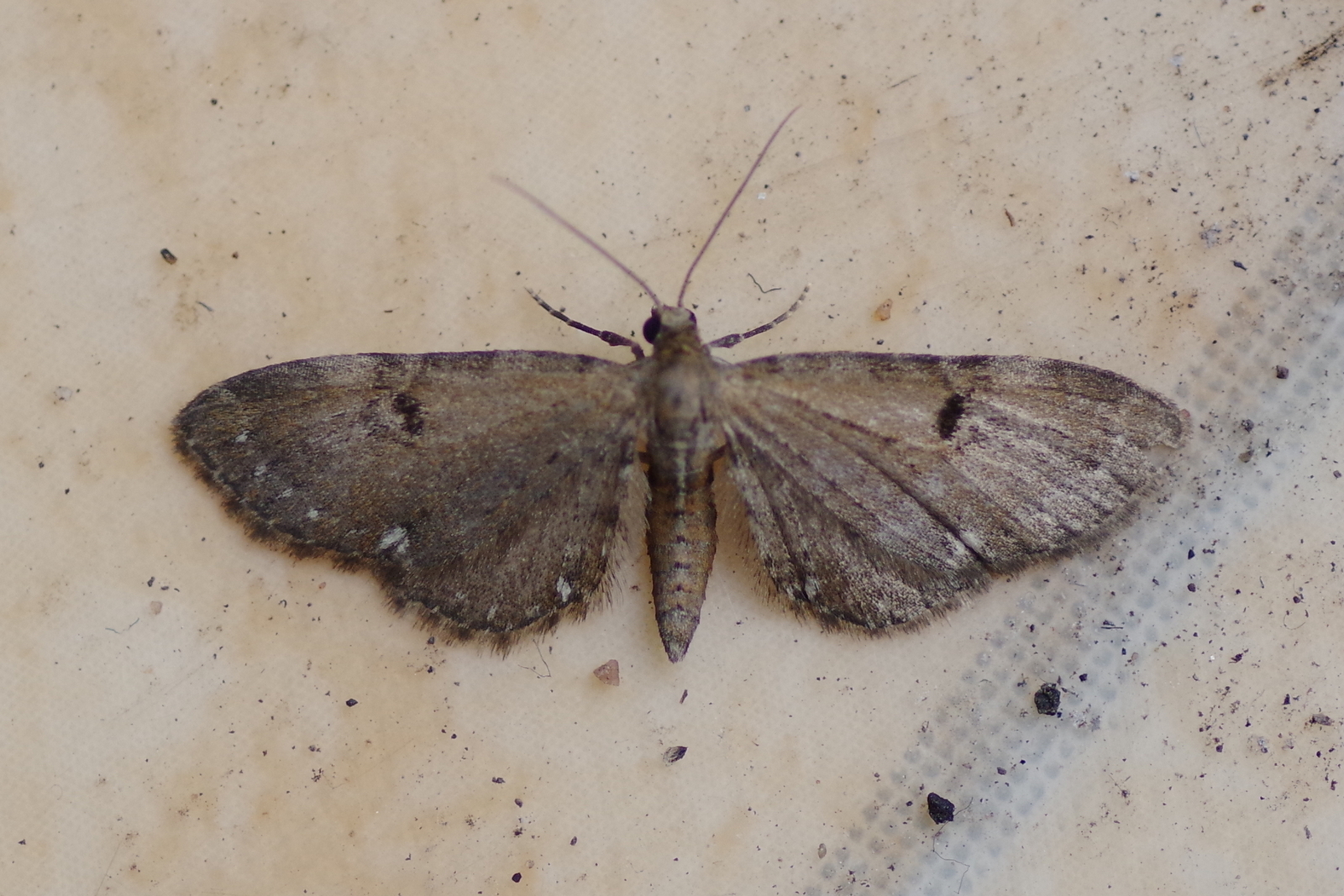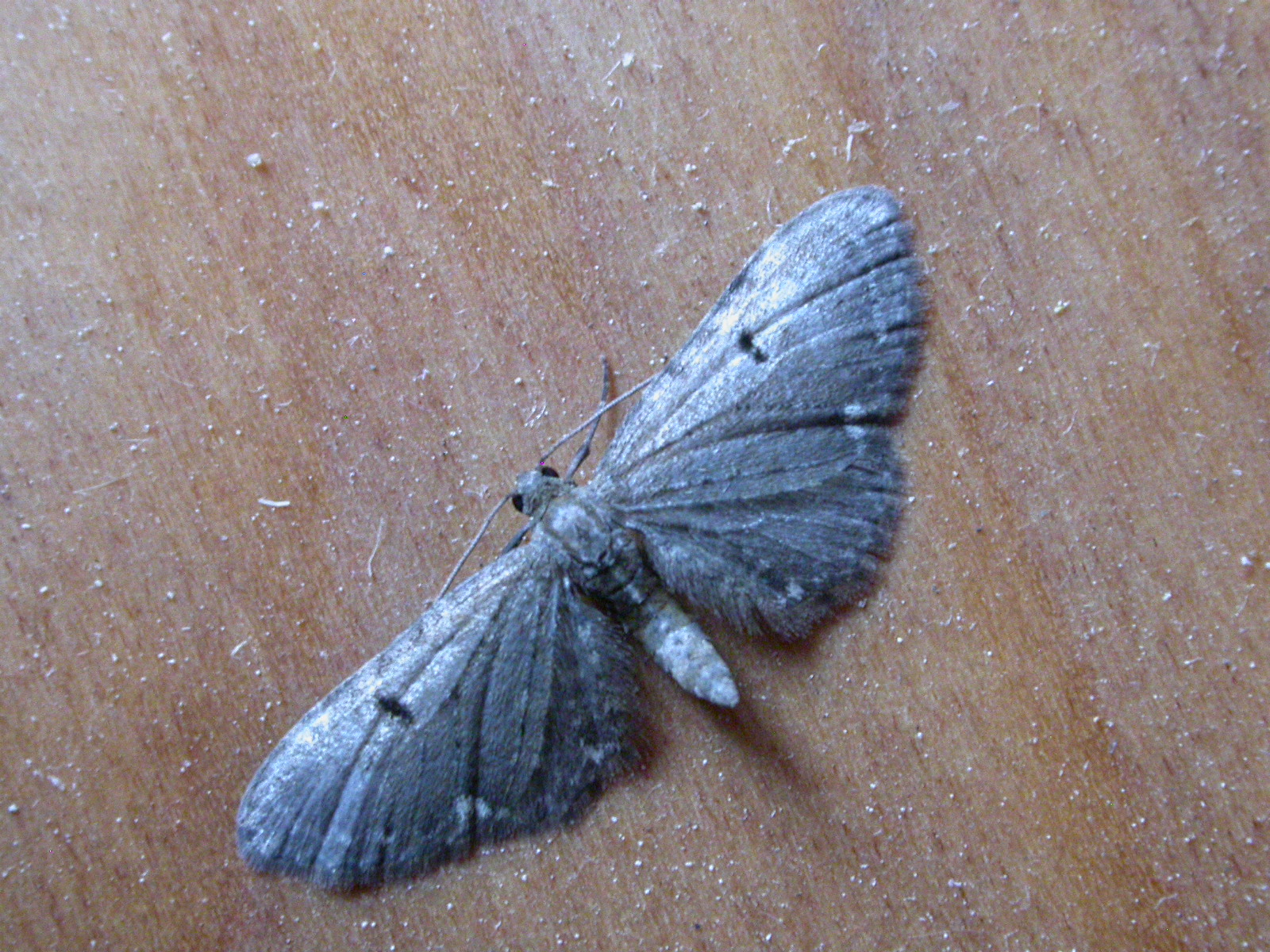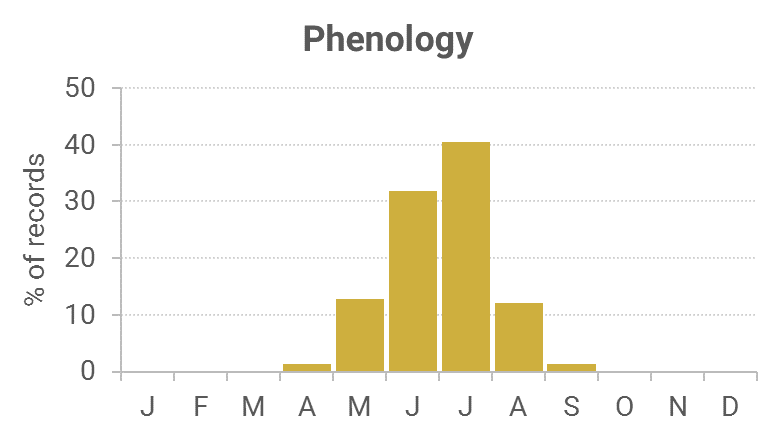Identification
Care required to separate from other ‘pugs.’ A noticeable, large cream corner spot with other cream markings near the outer edge should help identify this pug. From our records it has appeared up to 13th July, and again from 20th July, so the CMR requests specimens or photos of any July records to validate the period.
Recording method
Comes to light.
Life cycle
Two generations, May to June and August. Overwinters as a pupa, in loose earth. Larvae during June and July, secondly September.
Larval foodplants
Black Currant and Red Currant. Larvae also feed on Wild Hop, but this plant is uncommon in Dumfries and Galloway.
Habitat
Gardens and allotments, but also in open woodland and scrub where wild Red and Black Currants are found.
History
First recorded for Dumfries and Galloway in 1870 for VC73 in Colvend parish by White, in 1910 for VC74 at Corsemalzie by Gordon who records ‘two taken at dusk near the Malzie Burn’ and in 1950 for VC72 at Tynron by Duncan.








